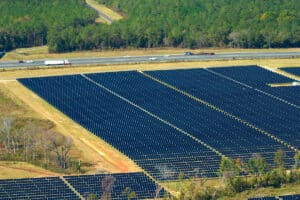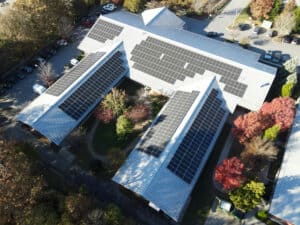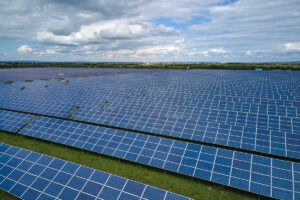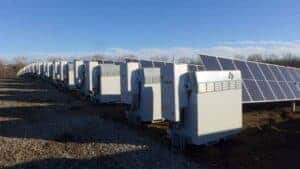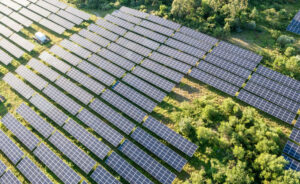Thermal energy storage explained
During warm weather, higher utility bills are commonly seen by facilities due to a cooling system’s need to work continuously to perform its job of keeping the building cool. Thermal energy storage can help prevent this and effectively cool a facility during hot summer days.
As with other renewable energy products, thermal energy storage achieves two main goals for businesses: lowering utility costs and improving operational efficiency. How are these two goals accomplished? Read on to find out!
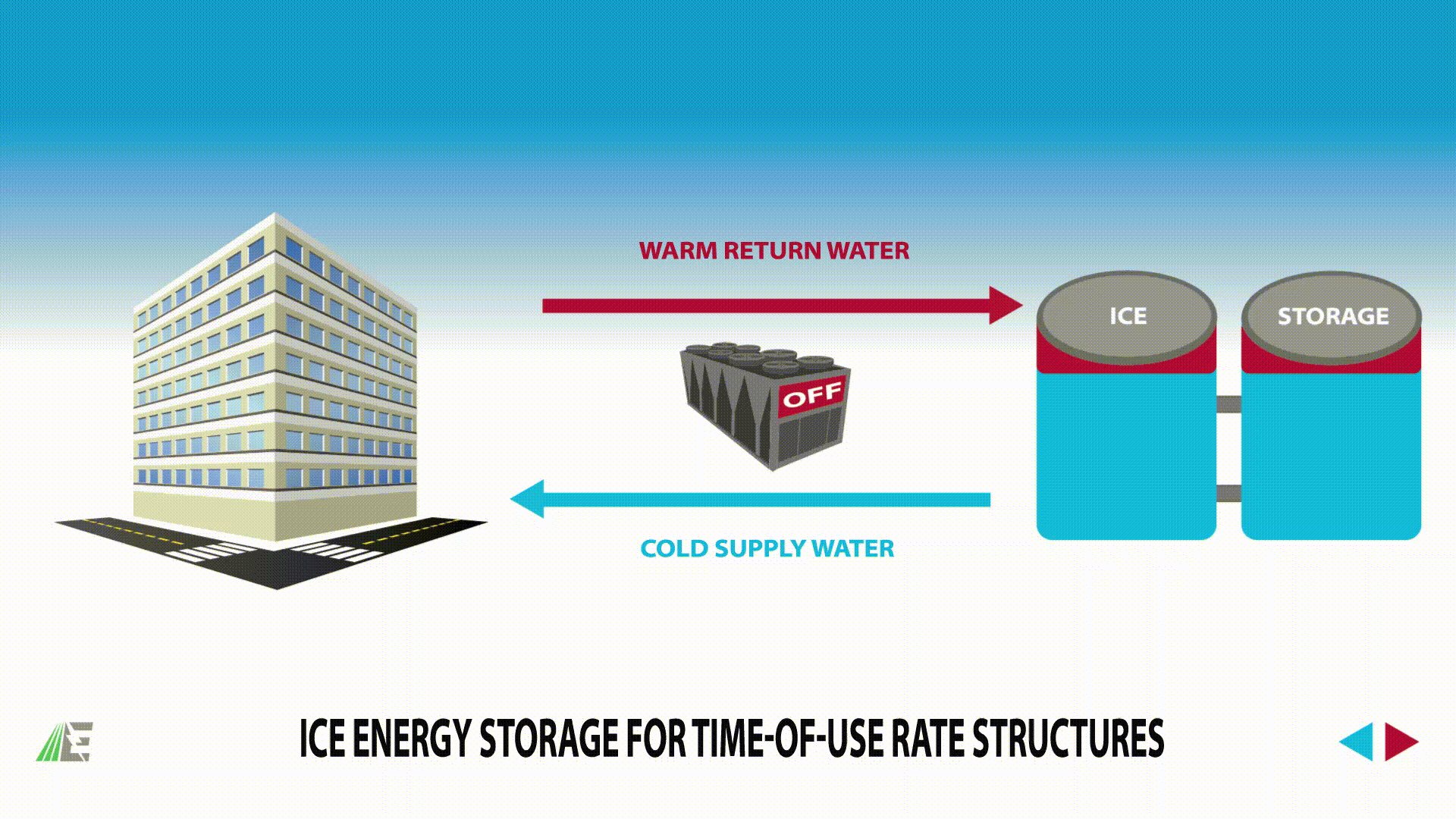
What is thermal energy storage?
Thermal energy storage is an add-on / enhancement for a building’s HVAC cooling systems. A thermal energy storage system is a large tank of water and glycol solutions that are frozen at night when energy is cheaper.
The idea behind thermal energy storage is that it off-sets the coincident peak that utilities see during the summer from HVAC electric demand. In a sense, a thermal energy system acts as a battery for a building’s HVAC unit.
How does thermal energy storage work?
A thermal energy storage system utilizes the compressors in chillers, or RTUS, to cool a huge block of ice at night. Night time, when the building is using the least amount of energy, is known as “off-peak hours.” This is a time when energy uses are at a minimum allowing for the most efficient and cheapest cooling periods in a day.
As warm summer days begin to heat up, the ice melts and the cool vapors are used to cool the building instead of traditional HVAC system compressors. For a better understanding of thermal energy systems and how they work, what the video below.
Benefits of Thermal Energy Storage
There are many benefits to implementing thermal energy storage. One is that it allows businesses to eliminate their entire HVAC coincident peak load.
Also, many utilities will incentivize the adoption of thermal energy storage with special rates and recognize the reduced peak demand, and can payback as quick as 2-3 years. Reducing stress on the electric grid during hot summer days is another key benefit. Lastly, thermal energy storage helps increase the useful life of an HVAC system, since it requires little to no usage on warm days when it typically works continuously to keep your building cool.
Battery storage with thermal energy
Similar to thermal energy, batteries store energy and discharge the energy throughout the day. Commercial battery storage allows your building to store electricity from an electric grid or a renewable energy source.
Energy storage allows facilities to store energy with maximum usage during off-peak hours, and discharge the energy throughout the day; this allows for the most efficient usage of your HVAC system and also assists in peak demand management.
Benefits of Commercial Battery Storage
If a system at a facility is charged with renewable energy, the batteries can qualify for the Renewable Energy Investment Tax Credit (ITC). Batteries can also significantly increase project paybacks with utilities that charge high amounts for electric demand.
Interested in Thermal Energy Storage or Batteries?
Contact EnergyLink for a free consultation today!

